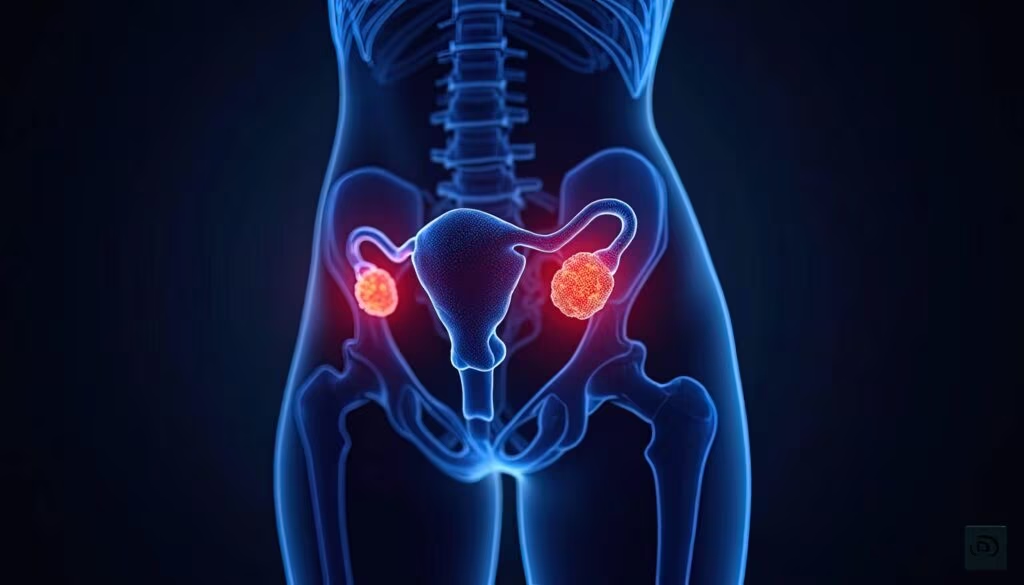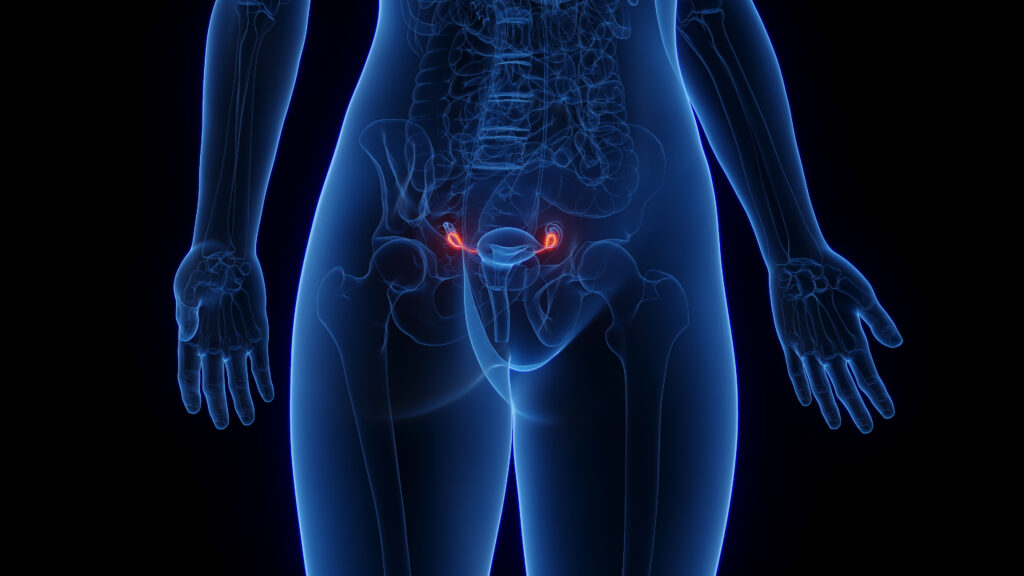The past decade has seen marked fluctuations in opinions concerning the merits and risks of post-menopausal hormone therapy. In July 2002, menopause management faced a major turning point when the first data from the Women’s Health Initiative (WHI) trial were released. The study was categorized as a primary prevention trial for coronary heart disease, although the fact that the mean age of recruitment was 63 years was not given enough importance at that time.
The past decade has seen marked fluctuations in opinions concerning the merits and risks of post-menopausal hormone therapy. In July 2002, menopause management faced a major turning point when the first data from the Women’s Health Initiative (WHI) trial were released. The study was categorized as a primary prevention trial for coronary heart disease, although the fact that the mean age of recruitment was 63 years was not given enough importance at that time. WHI investigators concluded that hormone therapy (HT) was not cardioprotective and, in fact, its risk–benefit ratio did not favor the use of post-menopausal hormones for prevention of chronic diseases. As a result, there was a dramatic change in prescription habits following recommendations to reserve HT for very symptomatic women, and to limit its use to the “shortest duration needed” and “to the lowest effective dosage.” This was the atmosphere in which the International Menopause Society (IMS) initiated the IMS workshop held in Vienna (December 2003), and the subsequent IMS Position Paper was based on the Workshop discussions. Looking at global perspectives, and being independent of local or regional constraints imposed by official health authorities, the IMS statement called for a more balanced approach in the interpretation of the scientific data on hormone use that were available in 2003. Since then, additional information has been accumulated from both arms of the WHI study, observational trials, and other studies, allowing a more comprehensive review on all matters related to the use of hormones in the post-menopausal period. In view of the above, the IMS Board decided that it was time to update the 2004 statement, and to enlarge its scope to menopause management and adult women’s health in general. More than 30 experts from the various fields of menopause medicine reviewed the latest information in a workshop held in Budapest in February 2007.
The following Recommendations express the views of the IMS on the principles of HT in the peri- and post-menopausal periods. Throughout the Recommendations, the term HT will be used to cover all therapies including estrogens, progestogens, combined therapies, and tibolone.
The previous IMS statement in 2004 is still valid, and serves as a basis for the Current Updated Recommendations.
We are aware of the geographical variations related to different priorities of medical care, the different prevalence of diseases, and country-specific attitudes of the public, the medical community, and the health authorities toward menopause management, which may all impact on HT. Therefore, the following Recommendations give a simple, global overview that serves as a common platform on issues related to the various aspects of HT. These Recommendations were reviewed and discussed by representatives of more than 60 national and regional menopause societies, from all continents. These Recommendations can be adapted and modified according to local needs.
Governing Principles
HT should be part of an overall strategy including lifestyle recommendations regarding diet, exercise, smoking, and alcohol for maintaining the health of post-menopausal women. HT must be individualized and tailored according to symptoms and the need for prevention, as well as personal and family history, results of relevant investigations, and the woman’s preferences and expectations. The risks and benefits of HT differ for women around the time of menopause compared with those for older women.
HT includes a wide range of hormonal products and routes of administration, with potentially different risks and benefits. Thus, the term ‘class effect’ is confusing and inappropriate.
Women experiencing a spontaneous or iatrogenic menopause before the age of 45 years and particularly before 40 are at higher risk for cardiovascular disease and osteoporosis. They will benefit from hormone replacement, which should be given at least until the normal age of menopause.
Counseling should convey the benefits and risks of HT in simple terms, e.g. absolute numbers rather than as percentage changes from baseline expressed as a relative risk. This allows a woman and her physician to make a well-informed decision about HT. HT should not be recommended without a clear indication for its use.
Women taking HT should have at least one annual consultation to include a physical examination, update of medical history, relevant laboratory and imaging investigations, and a discussion on lifestyle.
There are no reasons to place mandatory limitations on the length of treatment. Whether or not to continue therapy should be decided at the discretion of the well-informed hormone user and her health professional, dependent upon the specific goals and an objective estimation of benefits and risks.
Dosage should be titrated to the lowest effective dose. Lower doses of HT than have been used routinely can maintain quality of life in a large proportion of users. Long-term data on lower doses regarding fracture risk and cardiovascular implications are still lacking.
In general, progestogen should be added to systemic estrogen for all women with a uterus to prevent endometrial hyperplasia and cancer. However, natural progesterone and some progestogens have specific beneficial effects besides their expected actions on the endometrium that could justify their use. Low-dose vaginal estrogens administered for the relief of urogenital atrophy do not require progestogen comedication. Direct delivery of progestogen to the endometrial cavity from the vagina, or by an intra-uterine system, is logical and may minimize systemic effects.
Androgen replacement should be reserved for women with clinical signs and symptoms of androgen insufficiency. In women with bilateral oophorectomy or adrenal failure, androgen replacement has significant beneficial effects, in particular on health-related quality of life and sexual function.
Benefits of Hormone Therapy
General
HT remains the most effective therapy for vasomotor and estrogendeficient urogenital symptoms. Other menopause-related complaints, such as joint and muscle pains, mood swings, sleep disturbances, and sexual dysfunction (including reduced libido), may improve during HT. Quality of life and sexuality are key factors to be considered in the management of the aging individual. The administration of individualized HT (including androgenic preparations when appropriate) improves both sexuality and overall quality of life.
Post-menopausal Osteoporosis
HT is effective in preventing the bone loss associated with the menopause and decreases the incidence of all osteoporosis-related fractures, including vertebral and hip, even in patients at low risk. Although the magnitude of decline in bone turnover correlates with estrogen dosage, even lower-than-standard- dose preparations maintain a positive influence on bone indices in most women. Based on updated evidence on effectiveness, cost, and safety, HT is an appropriate first-line therapy in post-menopausal women presenting with an increased risk for fracture, particularly under the age of 60 years, and for the prevention of bone loss in women with premature menopause. The protective effect of HT on bone mineral density declines after cessation of therapy at an unpredictable rate, although some degree of fracture protection may remain after cessation of HT.
The initiation of standard-dose HT is not recommended for the sole purpose of the prevention of fractures after the age of 60 years. Continuation of HT after the age of 60 years for the sole purpose of the prevention of fractures should take into account the possible long-term effects of the specific dose and method of administration of HT compared with other proven therapies.
Cardiovascular Disease
Cardiovascular disease is the principal cause of morbidity and mortality in post-menopausal women. Major primary prevention measures (besides smoking cessation and diet control) are weight loss, blood pressure reduction, and diabetes and lipid control. There is evidence that HT may be cardioprotective if started around the time of menopause and continued long-term (often referred to as the ‘window of opportunity’ concept). HT markedly reduces the risk of diabetes and, through improved insulin resistance, has positive effects on other risk factors for cardiovascular disease such as lipid profile and metabolic syndrome.In women less than 60 years old, recently menopausal, and without prevalent cardiovascular disease, the initiation of HT does not cause early harm and, in fact, reduces cardiovascular morbidity and mortality. Continuation of HT beyond the age of 60 should be decided as a part of the overall risk–benefit analysis.
Other Benefits
HT has benefits for connective tissue, skin, joints, and intervertebral disks, and may reduce the risk of colon cancer. HT initiated around the time of menopause, or by younger post-menopausal women, is associated with a reduced risk of Alzheimer’s disease.
Potential Serious Adverse Effects of Hormone Therapy
Studies on the risks of post-menopausal hormone use have mainly focused on breast and endometrial cancer, venous thromboembolism (pulmonary embolism or deep vein thrombosis), stroke, and coronary events.
Breast Cancer
The incidence of breast cancer varies in different countries. Therefore, currently available data cannot necessarily be generalized. The degree of association between breast cancer and post-menopausal HT remains controversial. Women should be reassured that the possible risk of breast cancer associated with HT is small (less than 0.1% per annum). For combined HT, observational data from the Million Women Study suggested that breast cancer risk increased as early as the first year, raising serious reservations on possible methodological flaws. On the contrary, randomized controlled data from the WHI study indicate that no increased risk is observed in women initiating HT for up to seven years. It should be noted that the majority of subjects in the WHI study were overweight or obese.
Data from the WHI and Nurses’ Health Study suggest that long-term estrogen-only administration for seven and 15 years, respectively, does not increase the risk of breast cancer in American women. Recent European observational studies suggest that risk may increase after five years.
There are insufficient data to evaluate the possible differences in the incidence of breast cancer using different types and routes of estrogen, natural progesterone and progestogens, and androgen administration.
Baseline mammographic density correlates with breast cancer risk, but this does not necessarily apply to the increase in mammographic density induced by HT. The combined estrogen–progestogen therapy-related increase in mammographic density may impede the diagnostic interpretation of mammograms.
Endometrial Cancer
Unopposed estrogen administration induces a dose-related stimulation of the endometrium. Women with a uterus should have progestogen supplementation.
Continuous combined estrogen–progestogen regimens are associated with a lower incidence of endometrial hyperplasia and cancer than occurs in the normal population. Direct intra-uterine delivery systems may have advantages. Regimens containing low-/ultra-low doses of estrogen and progestogen cause less endometrial stimulation and less bleeding.
Thromboembolism and Cardiovascular Events
The HT-related risk for serious venous thromboembolic events increases with age (although minimal until age 60), and is also positively associated with obesity and thrombophilia. By avoiding firstpass hepatic metabolism, transdermal estrogen may avert the risk associated with oral HT. The impact on the risk of a thromboembolic event may also be affected by progestogen, depending on the type. Late starters of standard-dose HT may have a transient slightly increased risk for coronary events. The risk of stroke is correlated with age, and HT may increase the risk of stroke after the age of 60. Safety data from studies of low-dose and ultra-low-dose regimens of estrogen and progestogen are encouraging.
Alternative Treatments
The efficacy and safety of complementary alternative medicines have not been demonstrated and further studies are required. Selective serotonin re-uptake inhibitors, selective noradrenaline re-uptake inhibitors, and gabapentin are effective in reducing vasomotor symptoms in short-term studies. Their long-term safety needs further evaluation.
There are no medical or scientific reasons to recommend unregistered ‘bioidentical hormones.’ The measurement of hormone levels in the saliva is not clinically useful. These ‘customized’ hormonal preparations have not been tested in studies and their purity and risks are unknown.
Research
There is an urgent need for further research, especially into the relative merits of lower doses, regimens, and routes of administration.
Conclusion
The safety of HT largely depends on age. Women younger than 60 years should not be concerned about the safety profile of HT. New data and re-analyses of older studies by women’s age show that, for most women, the potential benefits of HT given for a clear indication are many and the risks are few when initiated within a few years of menopause. In view of the new data, regulatory authorities should review their current recommendations as a priority.■
An extended version of these IMS Recommendations was published in Climacteric, 2007;10:181–94. The original IMS Position Statement was published in Climacteric, 2004;7:8–11.












